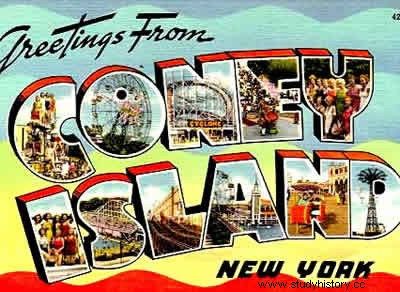
By Rainer Sousa
Contrary to what it seems, the development of large urban centers was not just a space for the expansion of capitalist activities. Along with the growth of cities, we observed a great demand for attractions, shows, shows and parks that could offer some distraction to the thousands of professionals and workers at the time. It was in this context that the Coney Island region of New York became one of the most popular entertainment centers in the USA.
Since the 19th century, this part of the New York coastline has become a great laboratory for the creation of new entertainment. Around 1884, that place was a testing ground for the first roller coaster in history. In the year 1925, the roller coaster “Thunderbolt” was developed by engineer John Miller and remained active until the beginning of the 21st century.
Over time, the success of Coney Island attractions divided the place into different amusement parks that vie for the public's attention. In this rage to arouse the curiosity of others, businessman Samuel W. Gumpertz, owner of the Dreamland Circus Sideshow, ended up creating the first circus of horrors that we know of. At the height of his enterprise, he exhibited Indians from the Philippines, members of African tribes and a “country” inhabited by 212 dwarves.
For a long time, Coney Island attractions were a true myth in the entertainment world. However, the arrival of the 1960s imposed a difficult time for the place. Initially, because a fire ended up damaging much of the structure of the place. Furthermore, the creation of Disneyland practically imposed unfair competition on that place steeped in laughter and the past.
Currently, the parks and lands of Coney Island are the target of intense real estate speculation. A few years ago, a construction company called Thor Equities purchased Astroland, one of the most iconic parks in the area. Sensing the threatening change of the winds, several fans of the place organize marches and a petition, to be sent to the City of New York, which defends the maintenance of Coney Island attractions.
Regardless of its maintenance, we can see that Coney Island marked an entire era and also served as a symbol for those who refute the serious seriousness of everyday life. In 1968, beatnik poet Lawrence Ferlinguetti named one of his works the title “Coney Island of the Mind”. In the following decade, singer Lou Reed took refuge there to face his drug problems and compose new songs.
